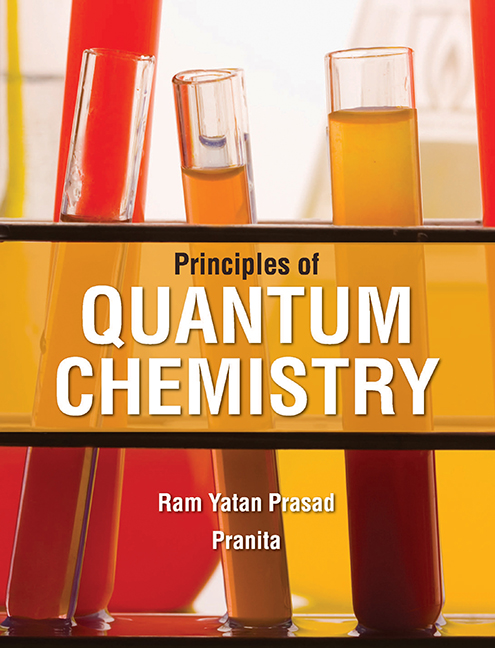Book contents
- Frontmatter
- Dedication
- Contents
- List of Figures
- List of Tables
- Foreword
- Preface
- 1 Quantum Theory
- 2 Wave–Particle Duality
- 3 Mathematical Techniques
- 4 Quantum Mechanical Operators
- 5 Postulates of Quantum Mechanics
- 6 The Schrödinger Equation
- 7 Playing with the Schrödinger Equation
- 8 Hydrogen Atom
- 9 Approximate Methods
- 10 Diatomic Molecules
- 11 Multi-electronic Systems
- 12 Polyatomic Molecules
- 13 Hückel Molecular Orbital Theory/Method
- 14 Density Functional Theory
- Glossary
- Appendix I
- Appendix II
- Appendix III
- Model Question Papers
- Index
10 - Diatomic Molecules
Published online by Cambridge University Press: 02 December 2022
- Frontmatter
- Dedication
- Contents
- List of Figures
- List of Tables
- Foreword
- Preface
- 1 Quantum Theory
- 2 Wave–Particle Duality
- 3 Mathematical Techniques
- 4 Quantum Mechanical Operators
- 5 Postulates of Quantum Mechanics
- 6 The Schrödinger Equation
- 7 Playing with the Schrödinger Equation
- 8 Hydrogen Atom
- 9 Approximate Methods
- 10 Diatomic Molecules
- 11 Multi-electronic Systems
- 12 Polyatomic Molecules
- 13 Hückel Molecular Orbital Theory/Method
- 14 Density Functional Theory
- Glossary
- Appendix I
- Appendix II
- Appendix III
- Model Question Papers
- Index
Summary
We have already discussed the quantum mechanics of a system having one electron and one nuclear charge, i.e., one electron system consisting of a nucleus with one charge only. We know that chemistry is concerned with the collection of atoms called molecules. One of the serious flaws of Bohr's theory is that it failed to predict chemical bonding. Modern quantum theory became successful in predicting the condition of chemical bonding and that of molecules. For some simple molecules, the existing quantum chemical results are at least as good as the experimental findings. For larger molecules, however, approximations are needed. Most of the rest study will be centred around the applicability of approximate methods to do the qualitative forecasts about the electronic nature of molecules.
In this chapter, we shall deal with the molecular orbital theory (MOT) and valence bond (VB) approach to the formation of diatomic molecules. It is to be noted that whether we deal with the MOT approach or VB approach, we have to take measures related to the electrons and nuclei (proton is heavier than electrons). Since the nuclei are heavier than the electrons, therefore, the nuclei move very slowly in comparison to the electrons. This idea was first put forth by Born and Oppenheimer in 1927. Their idea opined that the vibrational and rotational motions of a molecule are separable from the electronic motions.
Before dealing with the MOT and VB approach, we shall deal with the Born−Oppenheimer approximation in the light of wave mechanics.
Born−Oppenheimer approximation
The Born−Oppenheimer approximation is an adiabatic approximation in which the motion of the atomic nuclei is considered to be much slower than the motion of the electrons. When we want to estimate the motion of electrons, the nuclei can be considered to be in the fixed position.
In the Born−Oppenheimer approximation, the molecular potential energy varies with the inter-nuclear distance. Formulation of Hamiltonian may be done in two ways.
1. By keeping the inter-nuclear distance constant (R → 0 for large nucleus−nucleus potential energy).
2. By considering the motion of the nucleus. R should be variable for
(i) Diatomic molecules will be considered as harmonic oscillator and rigid rotator, Whereas
(ii) The molecule will be considered as an anharmonic oscillator and non-rigid rotator. This will be a general case to study hyper-fine structure in band spectra
- Type
- Chapter
- Information
- Principles of Quantum Chemistry , pp. 419 - 496Publisher: Foundation BooksPrint publication year: 2014



